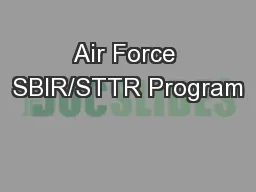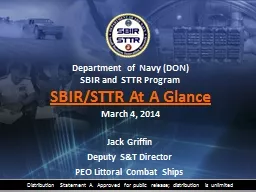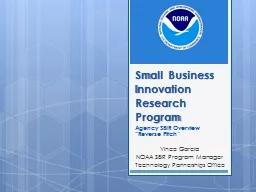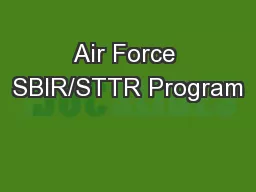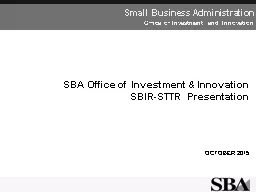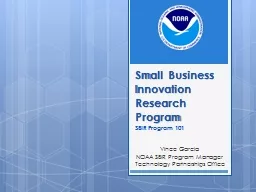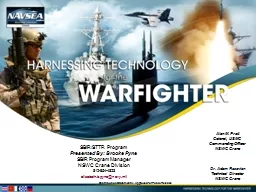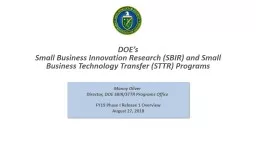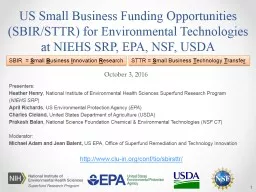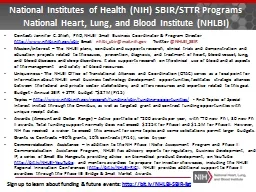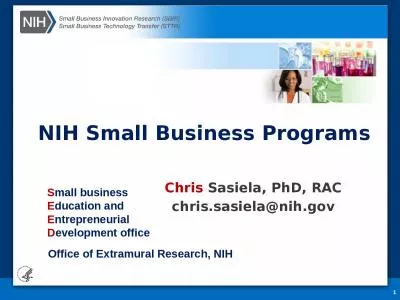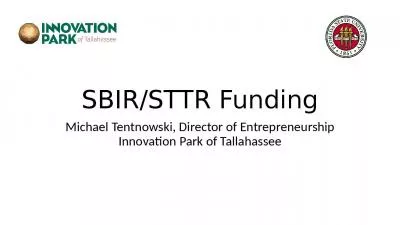PPT-Air Force SBIR/STTR Program
Author : stefany-barnette | Published Date : 2018-10-20
Economic Impact Analysis 2015 Moderator Ray Friesenhahn TechLink Speakers James A Sweeney III Air Force SBIRSTTR Program Dr Will Swearingen TechLink Brian Lewandowski
Presentation Embed Code
Download Presentation
Download Presentation The PPT/PDF document "Air Force SBIR/STTR Program" is the property of its rightful owner. Permission is granted to download and print the materials on this website for personal, non-commercial use only, and to display it on your personal computer provided you do not modify the materials and that you retain all copyright notices contained in the materials. By downloading content from our website, you accept the terms of this agreement.
Air Force SBIR/STTR Program: Transcript
Download Rules Of Document
"Air Force SBIR/STTR Program"The content belongs to its owner. You may download and print it for personal use, without modification, and keep all copyright notices. By downloading, you agree to these terms.
Related Documents

